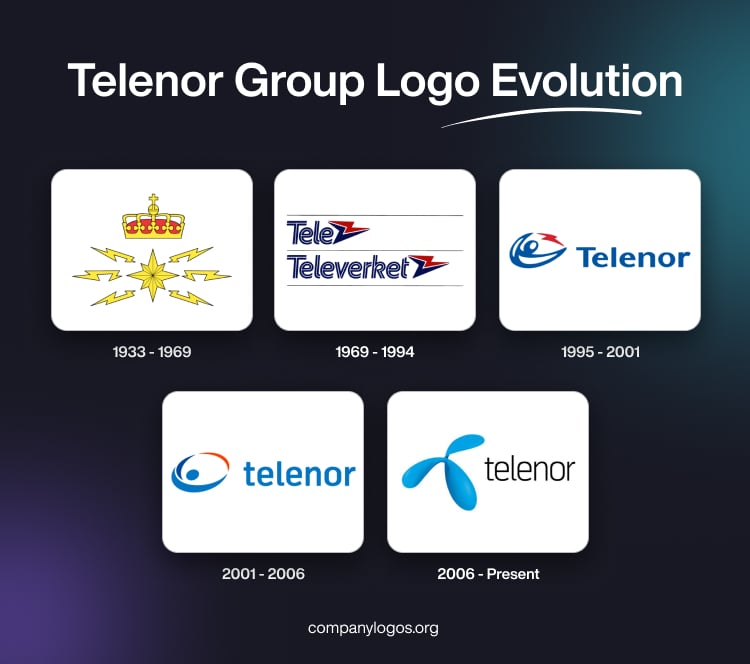
The Telenor Group is a Norway-based telecommunications company that was founded in 1855 in Oslo. The company has footprints all across the globe, especially in Scandinavia, Eastern Europe, and Asia. The Telenor Group logo has evolved alongside the company’s transformation from a national telegraph service into a major international telecommunications group.
The development of the logo reflects milestones in corporate identity, strategic ambition, and global market positioning. The article delves into the evolution of the Telenor Group logo, among other details of the company.
The Genesis of the Telenor Group Logo (1933 – 1969)
The original logo of the Telenor Group, or Telegrafverket as it was known then, featured a heraldic crown of scarlet red and yellow placed on top of an eight-pointed star with six lightning bolts emanating from it. The outline of each element of the logo was in black to achieve a greater visual clarity.
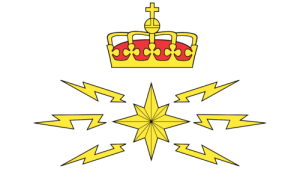
(1969 – 1994)
In 1969, the company name was changed from Telegrafverket to Televerket. The logo featured both the words “Tele” or “Televerket” in italics with thick black outlines along with the emblem to the right. The emblem in red and black resembled a lightning bolt, which could be interpreted as a signal or wavelength connecting two points.
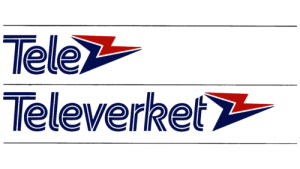
(1995 – 2001)
In the 1995 logo iteration, the company featured the upper part of a stylised human figure in deep blue and white with spread-out hands. Designed by Landor Associates, the emblem had a lightning bolt in red between the two hands to symbolise the transfer of signal. To the right of the emblem appeared the brand name “Telenor” in an austere sans-serif typeface.
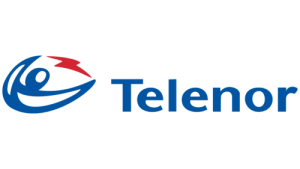
(2001 – 2006)
In 2001, the logo became more minimalistic, with the lightning bolt signal in red straightening to form an arch. Designed by the Scandinavian Design Group, the human figure forming the emblem did not have its white filling. The wordmark to the right of the emblem was presented in lowercase.
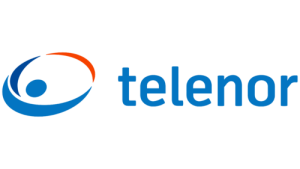
(2006 – Present)
Designed by Keshen Teo of Wolff Olins in London, the current Telenor logo has an abstract emblem in light blue with shadows resembling the long yet rounded petals of a flower. The brand name to the right is rendered in a lightweight sans-serif typeface in black.
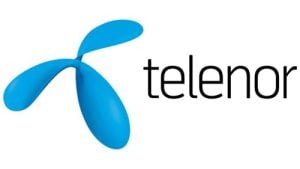
The Elements of the Telenor Group Logo
Font
The wordmark forming the visual identity of the Telenor Group is rendered using a lightweight sans-serif typeface with smooth lines. The font is similar to PF DIN Display Pro Thin or Nora Rounded Light.
Colour
The colour palette of the Telenor Group logo comprises black and light blue against a white background.
The History of Telenor Group
The Telenor Group is one of the world’s oldest telecommunications companies. It traces its origins back to 1855 when it was founded as Telegrafverket, the Norwegian Telegraph Administration. The company began by building Norway’s first telegraph line from Oslo (then Christiania) to Sweden, which laid the foundation for national communication infrastructure. By 1878, it had launched the country’s first telephone network, thereby rapidly expanding telephone services nationwide.
Throughout the 20th century, the company continued to innovate by introducing Norway’s first mobile telephone systems in 1966, data transmission capabilities in 1969, and satellite communications in 1992. In 1969, the organisation was renamed Televerket to reflect its expanding role beyond telegraphy. Over subsequent decades, it digitised its network and launched Norway’s first GSM network in 1993, while also beginning to operate internationally.
In 1994, Televerket changed into a public corporation to prepare for a more competitive market. In 1995, it adopted the name Telenor to signal a modern corporate identity and a focus on both domestic and international growth. The deregulation of the Norwegian telecom market by 1998 paved the way for Telenor’s partial privatisation in 2000, which was the largest public offering in Norway at the time. It marked a decisive step toward global expansion.
Throughout the early 2000s, Telenor aggressively extended its presence by acquiring or establishing mobile operations in Europe and Asia. The countries where it got a foothold include Russia, Bangladesh, Hungary, Malaysia, Denmark, Thailand, Pakistan, and Myanmar. The company invested heavily in new technology rollouts, launching 3G, 4G, and most recently, 5G networks.
Telenor serves millions of subscribers worldwide and remains a leading provider, especially across Scandinavia and Asia. The Norwegian government continues to hold a majority stake in the company, which reflects its roots as a public service provider. The company has evolved from a national telegraph operator to a multinational telecommunications leader.
Its growth is marked by continuous adaptation to technological advancements, regulatory changes, and market demands. Its history is often seen as intertwined with Norway’s own technological and social modernisation. In recent years, Telenor has focused on innovations in digital security, broadband, and 5G to maintain its competitive edge in a rapidly changing industry.
Interesting Facts About the Telenor Group
- Telenor Group was founded in 1855 as Telegrafverket, the Norwegian state telegraph service. Over the years, it evolved into a modern telecom giant with operations in Nordic and Asian countries.
- With over 165 years of history, Telenor is one of the oldest continuously operating telecommunications companies in the world.
- Telenor has had operations in Scandinavia and Asia, in countries such as Norway, Sweden, Denmark, Bangladesh, Pakistan, Thailand, Malaysia (via Digi), and Myanmar (operations exited in 2022).
- In recent years, Telenor has focused on consolidation and mergers to strengthen its position, such as the following:
- The 2023 merger of its Malaysian unit Digi with Celcom (Axiata).
- Exploring mergers in Thailand and other markets to boost competitiveness.
- Telenor has been a front-runner in 5G deployment, particularly in Norway and the Nordics. It actively invests in digital transformation, AI, and cybersecurity.
- At its peak, Telenor served over 170 million subscribers across its global operations, especially in South Asia and Southeast Asia.
- Telenor is committed to sustainability and aims for net-zero emissions by 2040. It seeks to promote digital inclusion and supports climate-resilient telecom infrastructure.
- Telenor Group is listed on the Oslo Stock Exchange, but the Norwegian government owns about 54%. This makes the company both publicly traded and state-affiliated.
- The core mission of the Telenor Group is to “empower societies” through responsible business practices, digital services, and connectivity across the globe.
- Telenor has innovation hubs like Telenor Research and partnerships with universities and tech firms to drive advancements in AI, IoT, and mobile services.
Finally
The Telenor Group logo reflects the journey of the company from a telegraph company to a modern telecommunications powerhouse. Each logo iteration mirrors the innovation, technological expertise, and futuristic vision of the company.